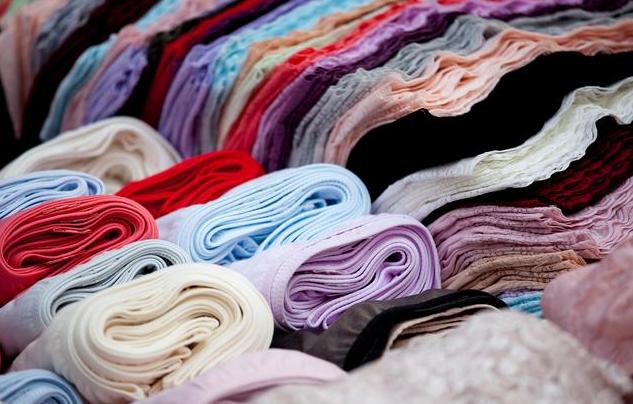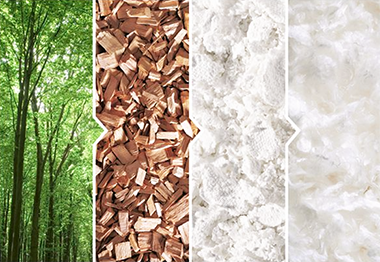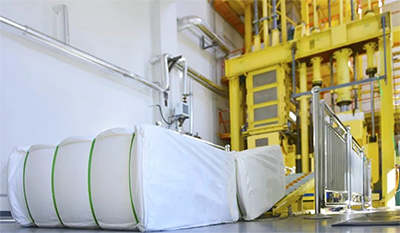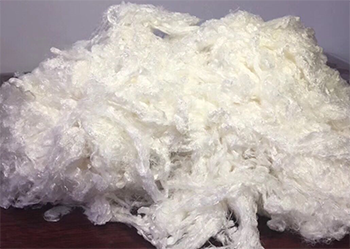From January to August 2023, China's industrial textile industry is running smoothly
At present, the world economic recovery is sluggish, trade protectionism is on the rise, and the global trade and investment environment is becoming increasingly complex. The trend of domestic economic recovery has slowed down, effective demand is insufficient, and the internal momentum of economic repair still needs to be strengthened. From January to August 2023, the overall production of China's industrial textile industry remained stable, and the main economic indicators showed signs of stabilization, but due to weakening market demand, the pressure on domestic and foreign trade has not been fully alleviated.
In terms of production, according to the data of the National Bureau of Statistics, from January to August, the growth rate of nonwovens production of enterprises above designated size fell back, down 3.5% year-on-year, and the production of curtain fabric continued to recover, and the output increased by 4.6% year-on-year.
In terms of economic benefits, according to the data of the National Bureau of Statistics, from January to August, the total operating income and profit of enterprises above the scale of the industrial textile industry fell by 7.4% and 30.7% year-on-year, respectively, narrowing by 0.2 percentage points and 10.8 percentage points compared with the first half of the year, and the operating profit margin was 3.4%, which has steadily recovered since the first quarter. From January to August, the total operating income and profit of non-woven enterprises above the scale fell by 5% and 66%, respectively, and the profit margin was 1.2%, down 2.2 percentage points. The total operating income and profit of enterprises above the scale of rope, rope and cable decreased by 7.6% and 60.5% respectively year-on-year, and the profit margin was 2%, down 2.7 percentage points year-on-year; The total operating income and profit of enterprises above the scale of textile belt and cord fabric decreased by 6.3% and 48.6%, respectively, and the profit margin was 2.9%, down 2.4 percentage points. The operating income and total profit of enterprises above the scale of tent and canvas decreased by 14.8% and 13.5% respectively, and the profit margin of 5.8% was the highest level in the industry; The total operating income and profit of other industrial textile enterprises above the scale of filtration and geotextile decreased by 9.6% and 19.6%, respectively, and the profit margin was 5.2%, down 0.6 percentage points year-on-year. In the short term, the operation of the industrial textile industry will continue to repair the situation.
In terms of international trade, according to China Customs data, from January to August 2023, the export value of China's industrial textile industry (customs 8-digit HS code statistics) was 26.29 billion US dollars, down 13.7% year-on-year; From January to August, industry imports (customs 8-digit HS code statistics) were 3.51 billion US dollars, down 16.4% year on year. By product, industrial coated fabric, felt cloth/tent is the current industry's two major export products, exports were 3.05 billion US dollars and 2.81 billion US dollars, respectively, down 11.3% and 14.3%; Overseas demand for nonwovens continued to pick up, with exports of 851,000 tons, an increase of 4.2%, and exports of $2.54 billion, down 5.6%. The overseas market of disposable sanitary products (diapers, sanitary napkins, etc.) remained active, with exports reaching $2.2 billion, an increase of 15.5%. Among the traditional products, the decline of the export value of leather base cloth and industrial glass fiber products has narrowed, and the decline of the export value of wire and rope textiles, canvas and packaging textiles has deepened to different degrees. Exports of wiping cloths (excluding wipes) amounted to $920 million, down 2.3% year-on-year.
From the perspective of export regions, industrial textiles accounted for a relatively large 56 chapters (nonwovens; Special yarn; For example, Asia is the largest export region, accounting for 57.1% of the total exports, of which exports to ASEAN accounted for 47% of the Asian market, followed by the European Union and Latin America market, with a share of 11.3% and 8.9%, and the African and North American market shares of 8.6% and 7.9%, respectively. In terms of exporting countries, Vietnam, the United States, India, Indonesia and Japan and South Korea are the main export destinations of China's 56 chapter and 59 chapter products, accounting for 34.7% of the total export.



